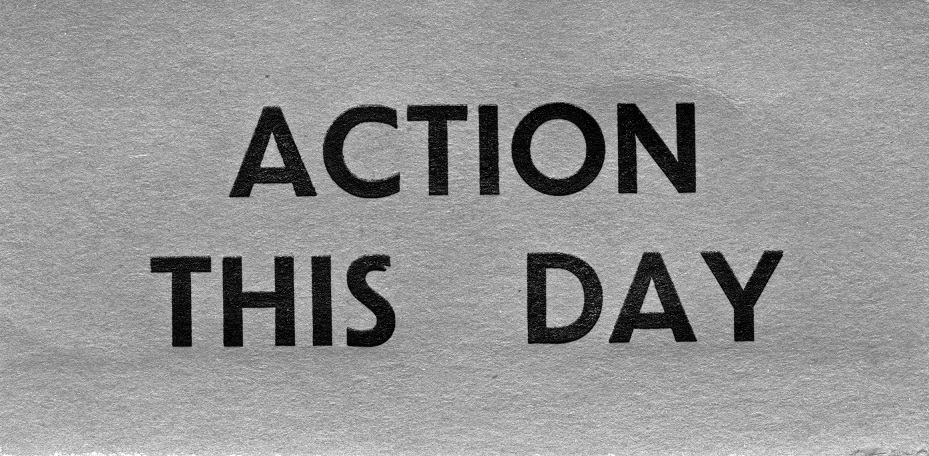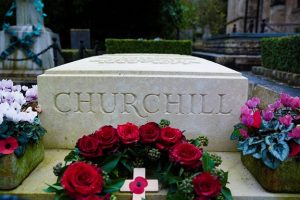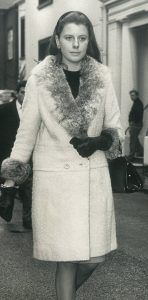
Finest Hour 166
Action This Day – Winter 1889-90, 1914-15, 1939-40

July 24, 2015
Finest Hour 166, Winter 2015
Page 18
By Michael McMenamin
 125 Years Ago
125 Years Ago
Winter 1889—90 • Age 15
“Anxious to Learn Drawing”
Winston came down with measles during the Christmas holidays and passed the illness on to his mother’s lover, Count Charles Kinsky. Winston wrote a letter of apology to Kinsky who wrote back on 25 January from Paris, clearly touched that his lover’s son had written to him. In his reply, Kinsky wrote, “How nice of you to think of writing to me!” and concluded, “Write to me sometimes. I shall always answer.”

2024 International Churchill Conference
A month later, Winston received an uncharacteristically pleasant letter from his father. “Very many thanks for your two letters. I am delighted to hear that you are getting on so well and hope you will be able to keep the steam up until the end of the term… the weather is vy cold and disagreeable but I have lots of work to get through at home and in the House.”
Winston apparently did not write frequently to his grandmother, the Duchess of Marlborough, but he did so in February and received a 27 February letter from her in return. “I was very happy to get your letter, and to find that you sometimes recollect your Grand Mother! I take the greatest interest in your welfare and progress. Am pleased to see you are beginning to be ambitious! You have a great example of industry in your dear Father & of thoroughness in work.”
While Churchill did not take up painting until mid-life, he began to take drawing lessons at Harrow after the winter break. He wrote to his mother that he was “very anxious to learn drawing,” explaining that he had dropped a singing class and taken up drawing instead because “Papa said he thought singing was a waste of time.” On 12 March he wrote to his mother “I am getting on in drawing and I like it very much. I am going to begin shading in Sepia tomorrow. I have been drawing little Landscapes and Bridges and those sort of things.”
100 Years Ago
Winter 1914—15 • Age 40
“Tell Them to Go & Milk Their Cows”
On 21 November, British naval aviators made a daring air raid on the hydrogen factory and Zeppelin base at Friedrichshafen, Germany, on the north shore of Lake Constance whose south shore is in Switzerland. The raid had originated from Belfort, a base in southeast France. The hydrogen factory was destroyed along with one Zeppelin. Prime Minister Asquith wrote to Venetia Stanley that “Winston is quite pleased with his raid”.
Unfortunately, the Swiss were not and formally complained to Foreign Secretary Grey that the British aircraft had flown over Swiss territory and that a Swiss citizen had been killed in the raid. Grey passed the complaint on to Churchill who curtly replied on 23 November that the “strictest instructions” were given not to fly over Swiss territory and they had not. Besides, he added, “No bomb was dropped on Swiss territory; & if a Swiss was killed in the Zeppelin factory, it serves him right.” When Grey told him on 27 November that the British government would have to apologize, Churchill replied, “Switzerland is lucky to have Englishmen fighting the battle of small states. The least she can do is not be querulous.”
Churchill’s patience with the Swiss was exhausted when Grey passed on to him a 30 November telegram from the British Minister in Berne suggesting “a few words [of apology] in the House of Commons would have a good effect.” Churchill replied to Grey in a “Secret” memorandum:
1) The International Conference of 1910 reached no agreement on the subject of aeroplanes flying over neutral territory. There is therefore no international law on the subject, & no question can arise of breach of neutrality….
2) Nevertheless the Br aviators honestly tried to avoid Swiss territory… they believe they succeeded.
3) We must not pay too much attention to pro-German Swiss.
4) Tell them to go & milk their cows.
By December, with trenches extending from the Swiss border to the Atlantic, many high officials were seeking an alternative policy to supplement, if not replace, the current policy that Churchill described in a 29 December letter to the Prime Minister as “sending our armies to chew barbed wire in Flanders.” Lloyd George was of a similar mind. So was Maurice Hankey, the Secretary to the Cabinet, the Committee of Imperial Defence and the War Council. All three men sent long memoranda at the end of December to Asquith with their respective suggestions for a new policy.
Churchill was to become the scapegoat for the failure of the Gallipoli operation in the spring of 1915. Ironically, however, Churchill’s proposal was the only one of the three that did not involve Turkey and the only one of the three that proposed hitting at Germany directly. Lloyd George proposed two attacks, one against Austria from the south by an allied army of Serbs, Rumanians, Greeks and Montenegrins. The second attack would be against Turkey with 100,000 troops landing in Syria. Churchill’s plan—one the Admiralty had drawn up years earlier—was to invade Germany from the North Sea, the first step being the invasion of the German barrier island of Borkum in the East Frisians. The island would then be used for a subsequent invasion of Schleswig-Holstein and seizure of the Kiel Canal followed by a landing on the Pomerianian coast 100 miles from Berlin. Hankey’s plan was an invasion of Turkey on the Gallipoli peninsula preceded by a forcing of the Dardanelles by the British Navy.
The War Council actually approved in principle the attack on Borkum island on 7 January. As Churchill wrote to Admiral Jellicoe on 11 January, the capture of Borkum is “the first step in an aggressive warfare wh wd…cow the enemy, beat him into his ports, & mine and wire him in there.” Moreover, he wrote it “is the only aggressive policy wh gives the Navy its chance to apply its energy & daring, & in 6 weeks of fierce flotilla warfare we cd beat the enemy out of the North Sea altogether.”
The next day Admiral Carden, the British fleet commander in the Mediterranean, sent a telegram offering his opinion that the Dardanelles could be forced by ships alone. This was sufficient for both Kitchener and the First Sea Lord Fisher to back Hankey’s plan: Churchill’s plan to invade Germany’s coast was abandoned.
In the midst of all this, Fisher on 4 January announced his intent to resign as First Sea Lord because Churchill had not implemented Fisher’s proposed policy of shooting German prisoners of war if Zeppelins dropped any more bombs on England. Churchill immediately replied that “The question of aerial defence is not one upon wh you have any professional experience. The question of killing prisoners in reprisal for an aerial attack is not one for the Admiralty and certainly not you to decide.” Churchill promised to bring Fisher’s views to the Cabinet, which, of course, did not adopt them. Churchill was able to coax the increasingly unstable Fisher out of his tree, however, as he agreed to withdraw his resignation.
75 Years Ago
Winter 1939—40 • Age 65
“Courage Would Have Failed Them”
Churchill was feeling the same kind of frustration in the Winter of 1939-40 as he had in 1914-15—dealing with a Prime Minister and Cabinet reluctant to take any affirmative action in prosecuting a war against Germany. He had proposed mining Norwegian waters to force into the open sea ore ships carrying Swedish iron ore from the Norwegian port of Narvik to Germany. He also proposed a military landing at Narvik and an overland invasion of Sweden to seize the ore fields, arguing “it may be the shortest and surest road to the end.” Similiarly, he had proposed mining the Rhine river. These proposals were all rejected by the Cabinet, prompting Churchill in a 15 January letter to Foreign Secretary Halifax to complain that “I see such immense walls of prevention built and building that I wonder whether any plan will have a chance of climbing over them…victory will never be found in taking the line of least resistance.”
Meanwhile, after the Battle of the River Plate Argentina and Uruguay were acting in a manner reminiscent of the Swiss complaining in 1914 of the British overflying Swiss territory. They complained that during the battle British warships entered the new 300mile non-combatant zone recently established by the Panama Conference of American States.
Churchill responded: “Laws of war gave raider right [to] capture, or sink after providing for crews, all trade with us in South Atlantic. No protest was made about this although it injured Argentine commercial interests. Why then should complaints be made of our action in ridding seas of this raider in strict accordance with same international laws from which we had been suffering[?]”
On 16 February, Churchill had an opportunity to act against Germany without first seeking the Cabinet’s approval. He learned that the German warship Altmark, with 299 British prisoners, was steaming toward Germany in Norwegian territorial waters. Churchill believed the Altmark was violating Norwegian neutrality by transporting British prisoners-of-war to Germany. He ordered the Navy to enter Norwegian waters, seize the Altmark and liberate the British seamen. Initially, the Norwegian Navy refused to allow the British to board the German ship and had orders to resist the British by force. Upon learning of this, Churchill consulted with Halifax and then personally ordered the British captain to board the Altmark. If the Norwegian Navy fired upon the British ships, Churchill directed that “you should defend yourself using no more force than is necessary, and ceasing fire when [the Norwegians] desist.”
The Norwegians did not resist, but the Germans did when boarded by the British Navy. All 299 British seamen were liberated and returned to England. Lord Lloyd wrote that had it been any other minister in charge “Courage would have failed them.”
Subscribe
WANT MORE?
Get the Churchill Bulletin delivered to your inbox once a month.




